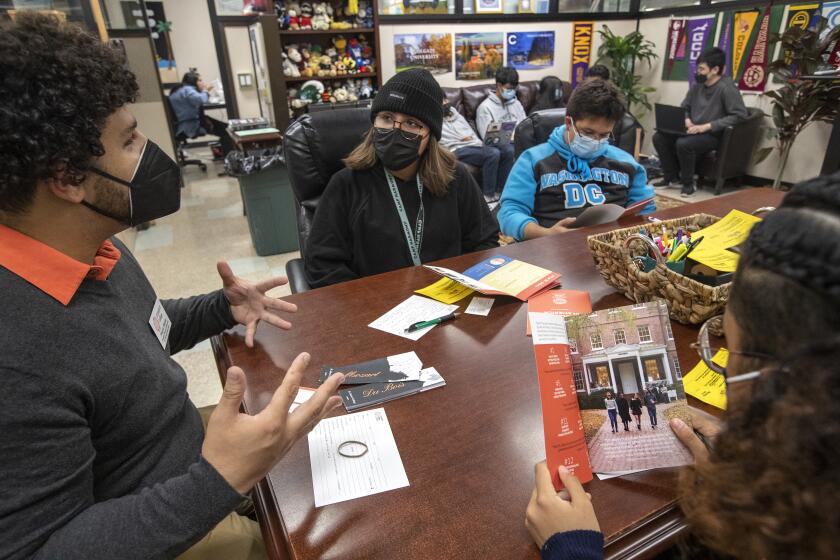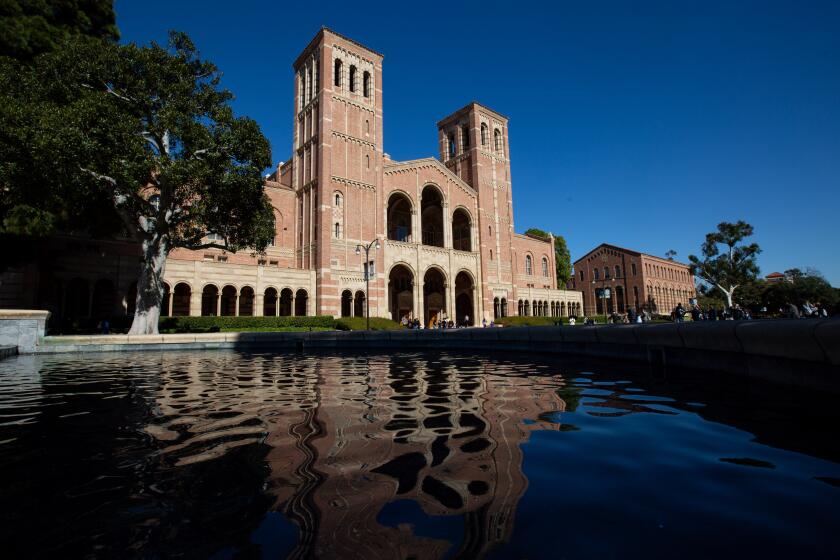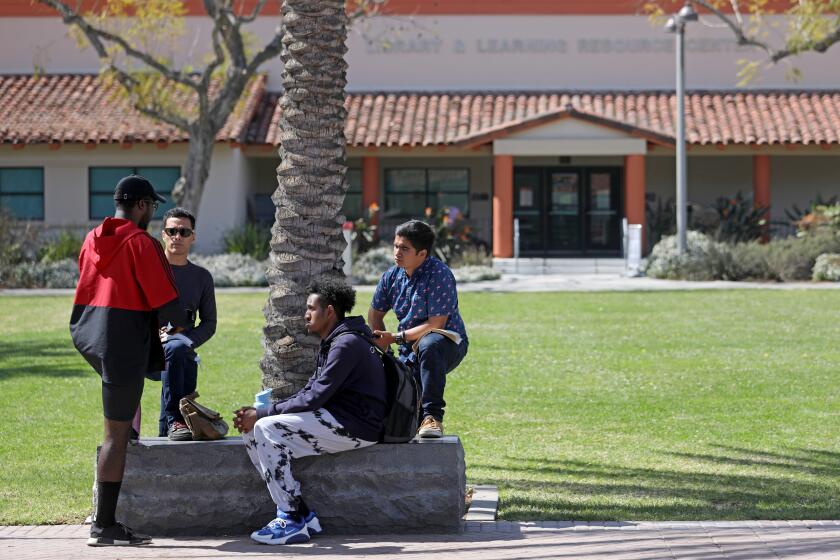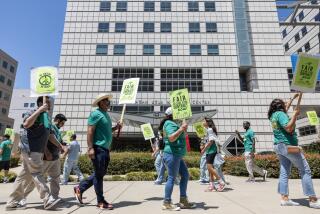Column: Will California honor its 150-year-old promise to keep UC affordable?
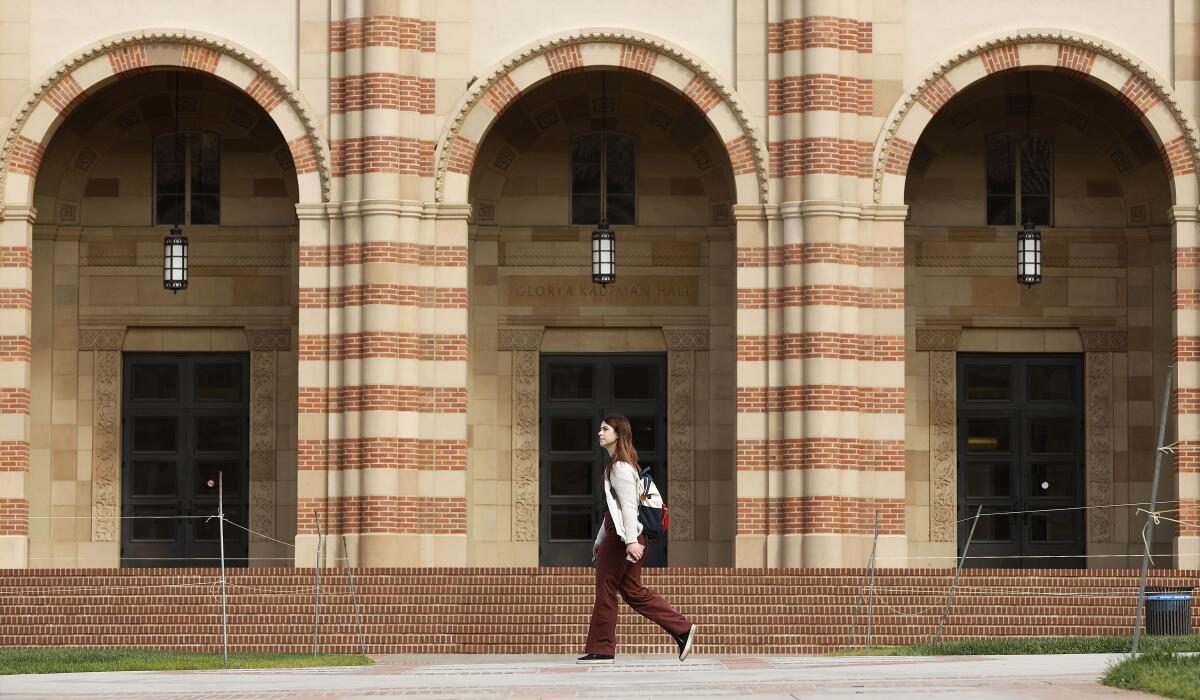
In a letter to The Times in May, Ralph Jones of Riverside reminisced about how easy and cheap it was to go to the University of California in the old days.
When he arrived at UC Riverside in 1968, he said, he paid $105 per quarter in non-instructional fees, plus books. He paid $75 per month to share what he called a âniceâ two-bedroom apartment. To transfer to Berkeley all he had to do was sign a card and show up.
âI look back on this as a time of affordable abundance,â he wrote. âI pity the students trapped in a system that was once designed for essentially free access for all California students with good grades.â
It does seem like a fantasy now, doesnât it? UC was entirely tuition-free until 1970.
Opinion Columnist
Nicholas Goldberg
Nicholas Goldberg served 11 years as editor of the editorial page and is a former editor of the Op-Ed page and Sunday Opinion section.
This month, as the UC systemâs 10 campuses â from Davis in the north to San Diego in the south â begin to reopen for the new school year, thatâs far from the case. The average cost of tuition alone for in-state residents is $13,104.
That by itself might not be the end of the world financially, especially because the UCs waive tuition for low-income families. But if you add in the cost of housing, food, transportation, campus fees and books, pretty soon youâre talking about real money: The estimated cost for an in-state student living on campus is $38,504 for the 2022-23 school year.
Itâs no wonder you hear about students saddling themselves with debt, or working punishingly long hours while juggling their schoolwork. Financial aid or no, itâs unsurprising that some kids canât afford to attend UC or must live at home or sleep in their cars or canât afford quite enough to eat.
A 2020 report commissioned by the UC regents found that 39% of undergraduates had âexperienced food insecurityâ during college and 5% had experienced homelessness. A May poll showed that 60% of Californians believe a UC education is largely or completely unaffordable.
And although there are many financial aid opportunities for low- and middle-income students, they and their families are often unaware of them.
I was reminded by Ralph Jonesâ letter that the twin promises of affordability and access date back to the very founding of the University of California. In March 1868, Gov. Henry Haight signed a charter establishing a state university and declaring that, as soon as it became financially feasible, âadmission and tuition shall be free to all the residents of the state.â
As college costs rise and students wonder whether they can afford their dream schools, California is pushing to help with more loan-free financial aid.
The California Master Plan for Higher Education, developed under then-UC President Clark Kerr and signed into law in 1960 by Gov. Edmund G. âPatâ Brown, reaffirmed the commitment to a tuition-free, broadly accessible education.
So what happened?
One thing that happened was Ronald Reagan, who fiercely championed the idea of charging students for their UC educations in his campaign for governor in 1966. He was an outspoken critic of the university, assailing the âsmall minority of beatniks, radicals and filthy speech advocatesâ who irritated him with their protest marches.
Once elected, Reagan promptly fired Kerr. As for free tuition, he just wasnât a government-will-provide-it sort of guy.
âTuition is not a dirty word,â Reagan told the Los Angeles Breakfast Club in July 1967. â... I think we all understand here that there is no such thing as free public education. The only question is âwho pays?â Up until now, the taxpayer has borne most of the cost of education in California.â
Three years later, UC added an âeducational feeâ â $150 â to its costs for undergraduates. And with that, it was off to the races.
Most Californians say the University of California and California State University are unaffordable, and value community college and skills training.
Tuition began to rise and was followed by cutbacks in state support for the university. Between 1995 and 2011, tuition tripled.
In 2011, the total amount UC students paid in tuition for the first time exceeded the amount of funding the university system received from the state. Californians who had once seemed willing to pay taxes for good public schools and colleges grew weary, I guess, of the cost.
Despite the tuition hikes, the university, to its credit, has done an awful lot to remain affordable and accessible. More than 40% of its students are the first in their families to go to college, helping to make UC a robust engine of social mobility. More than 70% of students receive grants or scholarships. A substantial portion of tuition revenue is redirected back to financial aid.
Today 56% of UC students pay no tuition at all. No family earning under $80,000 pays.
For the 2022-23 school year, several other initiatives are underway to help reduce student debt. The state has dramatically expanded the Cal Grant program, which was already the largest such financial aid program in the country. It increased by fivefold its Middle Class Scholarship Program for families earning less than $200,000 a year.
Reflecting how dire finances can get for its students, UC has established âbasic needs centersâ on its campuses, offering students access to food pantries, emergency housing and low-cost medical care.
New research suggests collegesâ policies around unpaid balances may be contributing to an enrollment decline while doing lasting financial harm to students.
âAffordability is a real issue, but I think weâre doing an awful lot to fight the problem,â said Rich Leib, the new chairman of the UC Board of Regents. âSometimes the problem is one of marketing. Families donât always realize that we can often come up with financial aid packages that make going to college a real possibility for lower-income students.â
One other point about tuition: To the extent tuition revenue is redirected to pay for financial aid, it actually serves as a subsidy from wealthier students to lower-income students. In that sense, it would be simplistic to say that tuition is at the root of the affordability problem. Itâs more like a symbol of it.
Iâve always loved the idea of Kerrâs Master Plan â an essentially free college education for all Californians. It represented an investment by taxpayers in the next generation and in the stateâs future. What Reagan didnât like is exactly what I loved: the community taking care of its own.
Sadly, weâre not going back to free college. But the commitment to affordability, access, diversity, social mobility and academic excellence should never be allowed to slip from view.
More to Read
A cure for the common opinion
Get thought-provoking perspectives with our weekly newsletter.
You may occasionally receive promotional content from the Los Angeles Times.

